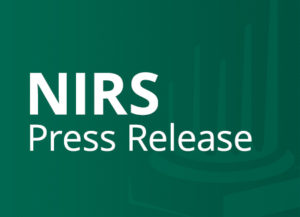WASHINGTON, D.C., January 23, 2013 – A new primer provides a comprehensive overview of the public pensions investment process, which has garnered increased attention in the wake of economic shocks that recently have impacted all investors.
NEW ISSUE BRIEF OUTLINES PUBLIC PENSION INVESTMENT PROCESS
Webinar Today at 1 PM ET to Review Findings; Register Here
WASHINGTON, D.C., January 23, 2013 – A new primer provides a comprehensive overview of the public pensions investment process, which has garnered increased attention in the wake of economic shocks that recently have impacted all investors. This issue brief focuses on how public pensions allocate assets and set expected rates of return including:
- Distribution of investments across stocks, bonds, and other asset classes in order to maximize returns and minimize risk.
- Principles that guide how public pension funds invest and the institutionalized practices through which plan trustees set investment policies.
- Evaluation and management of investment related risk.
- Investment return assumptions among public pension funds in comparison to historical performance and the future outlook.
How Do Public Pensions Invest? A Primer is co-authored by Ronnie Jung, CPA, who previously served as executive director of the Teacher Retirement System of Texas; and Nari Rhee, PhD, NIRS manager of research. The issue brief is published by the National Institute on Retirement Security (NIRS) and is available at www.nirsonline.org and here. A webinar to review the issue brief and respond to questions will be held today, January 23, 2013, at 1:00 PM ET. Register here or athttps://www2.gotomeeting.com/register/146583250.
Download the primer here.
“We developed this issue brief to provide interested policymakers, journalists, and citizens with a basic understanding of how a public pension system manages its investment,” said Diane Oakley, NIRS executive director. “Public pension funds currently hold some $3 trillion in assets under management that provide retirement security for some 19 million workers. So it’s critical that stakeholder have access to an accurate overview of the process including key players, investment policies, risk management, and rate of return assumptions. We hope this primer becomes the ‘go-to’ tool on public pension investments,” Oakley added.
The primer offers four key highlights:
- Public pension funds have a clear division of labor for making investment-related decisions. Fiduciary standards apply to each key role in the investment process.
- Public pension funds have rational and systematic processes for setting asset allocation in a diversified portfolio, estimating expected investment returns, and evaluating investment performance.
- The board of trustees of each public DB pension fund determines the acceptable level of risk that is prudent for their plan given its particular circumstances. They then adopt an asset allocation that is designed to maximize returns within the established level of risk.
- The level of risk assumed by public pension funds, as indicated by the percentage of assets invested in equities, is consistent with other institutional investors and with many prudent individual investors.
The National Institute on Retirement Security (www.nirsonline.org) is a non-profit organization established to contribute to informed policymaking by fostering a deep understanding of the value of retirement security to employees, employers, and the economy through national research and education programs. Located in Washington, D.C., NIRS has a diverse membership of organizations interested in retirement including financial services firms, employee benefit plans, trade associations, and other retirement service providers.
Contact: Kelly Kenneally 202.457.8190 o 202.256.1445 m kkenneally at nirsonline.org
